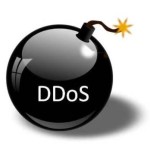I heard through the grapevine that you Sys Admins and IT Directors working for mid-size companies think security is a big deal… (yes, really) …and that DDoS Mitigation is something some of you are thinking about.
Well, I’m a giver so for my May 2015 research project, I painstakingly set out to find every service provider (that we sell) that offers DDoS Mitigation. Then, I interviewed each one individually, spoke to their engineers, reviewed their brochures and watched their webinars, in an effort to learn how to differentiate them. It was brutal but I’m done.
 This article is going to give you what you really want to know. The 5 Ways DDoS Mitigation providers structure their pricing and examples of each.
This article is going to give you what you really want to know. The 5 Ways DDoS Mitigation providers structure their pricing and examples of each.
In order to compare providers on a level playing field, I decided to price it as a company with a 1G Internet connection.
***Important Note: The pricing listed for each provider is rough “ballpark” pricing and is probably on the high side of what you could actually purchase it for. The purpose is to only give you an approximate idea of how the pricing structures vary.
1. Hours of Mitigation
Some providers charge you for the hours of mitigation, regardless of the number of Internet circuits or bandwidth. For instance, AT&T’s pricing is approx. $3,500/month, which will include a maximum of approx. 1,100 individual Internet circuits and 70 hours of total mitigation time. Additional hours cost approx. $195/hr/ckt.
2. Per Circuit, Per Mbps.
Another way providers price DDoS Mitigation is per Internet connection and each Internet connection’s bandwidth, with unlimited mitigation. An example would be CenturyLink, who charges approximately $4,200/month for a 1G Internet circuit and zero additional charges.
3. Proactive vs. Reactive Monitoring
Another variable that some providers offer is a discount on your pricing if you would like “proactive” vs. “reactive” service. In other words, would you like the provider to automatically initiate filtering if they are detecting you are being attacked (proactive), or would you like them to wait until you notify them that you think you are being attacked (reactive). CenturyLink has an approx. 15-20% discount for reactive mitigation vs. proactive.
4. Mitigations Per Month
If you are thinking you will have very few mitigations occur, you may want to find a provider that prices per mitigation per month. For instance, Integra charges a reasonable $375 base price and then charges per mitigation, with a peak of $3,675 for 20 mitigations/month. They consider the “end” of a mitigation is when there are zero mitigations required for a 24 hour period.
5. Per Circuit, Per Clean Traffic Mbps.
Probably the most common way of pricing DDoS mitigation is per circuit, for the minimum amount of “clean traffic” required (measured in Mbps). Examples of this pricing would be ViaWest, who charges approx. $50/Mbps/Ckt/month. Another example is ServerCentral, who charges approx. $3,099/month/ckt. for 200M of clean traffic.
As you can infer, each provider’s pricing structure is very different and will automatically make them either a really good fit for some companies and a really bad fit for others. As always, there are also add-on services and features that can further differentiate providers, based on your needs. Reach out to me or any of AeroCom’s salespeople if you’d like a custom pricing comparison for free.
Have you used a DDoS Mitigation provider?
Do you have one you’d recommend?
I’d love to hear your opinion. Pricing is great but the most important piece is getting opinions from the real IT Pro’s who have purchased and lived with this service every day.
About the Author
Mike Smith is the Founder and President of AeroCom and has been helping companies with telecom and cloud services since 1999. He has been the recipient of numerous business telecommunications industry awards and in 2011, he was honored as one of the top 40 business people in Orange County, CA., under 40 years old. Follow Mike on LinkedIn, Twitter or SpiceWorks.


![DDoS [INFOGRAPHIC]](https://www.aerocominc.com/info/wp-content/uploads/2015/06/Infographic-Final-150x150.jpg)



